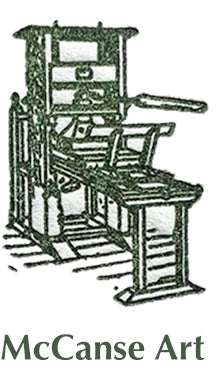Annemarie Slipper (née Teuscher)
Annemarie Teuscher was born in New York in 1932. She was raised in Montreal, where she studied painting at the Fine Arts department at McGill University. Teuscher married and had three children, but when the marriage dissolved, she moved to Toronto to continue her education at the Central Technical School. There she learned ceramics, which she found more relaxing than painting. Teuscher continued to work in ceramics while earning a living by making props for TV.

Annemarie Slipper, Standing head with partial collar
Teuscher later met fellow artist Gary Slipper and the two married. Around this time, Teuscher turned to sculpture and began sculpting the heads of the figures depicted in Slipper’s paintings. Slipper and Teuscher traveled together, eventually landing in San Miguel in 1988 during Eastertime. The two were so captivated by the place that after a short return to Toronto that year (which was becoming expensive for them), they relocated permanently to San Miguel. Since the aftermath of World War II, San Miguel had become a popular destination for North American artists looking for warmer and more peaceful climate. Teuscher and Slipper were among a number of Canadian artists who gravitated to the city, where numerous art schools had already been established by their predecessors.

Article in City & Country Home, March 1990, featuring work of Gary Slipper.
Around this time, Teuscher began working in clay; fortunately, bronze foundries were relatively inexpensive in San Miguel. Teuscher continued sculpting heads, and when she brought them to the Roberts Gallery in Toronto, who were exhibiting Slipper’s work at the time, the gallery immediately took her on as one of its artists.
Slipper and Teuscher commissioned architects Genevieve Desgagnes and Daniel Sirdey, known for their work in France and Latin America, to design them a unique home in San Miguel that would have a separate studio for either artist. In 1989, the two relocated to this new home, where they spent the rest of their lives together. Tesucher died a year before Slipper; she was described by her daughter Lisa as “fearless,” an independent and optimistic woman “who studied art in the company of Leonard Cohen” and had “a limitless sense of fun.”
Teuscher described her process in an interview via The Creative Process at Biddingtons (available here); “Mexican ceramics are low-fired earthenware, and I switched to low-firing when I moved here. My clay is specially mixed by a clay artist with ingredients from all over Mexico. It has quite a lot of "grog"-- the binder that strengthens the clay. Using a raku technique, I take the piece out of the hot kiln then into a combustible (I use newspaper) to fire the glaze. During the firing process, I don't use cones (thermometers), I use my eyes.” (Biddingtons). Teuscher notes that she often uses the same glaze, and all her pieces are burnished to bring out the form of the sculpture and quality of the clay. “This process takes a lot of time, but I value the result,” Teuscher said. “My pieces are meant to be touched.”
Sources:
Aleen Aked. Wikipedia, Wikimedia Foundation.
Aleen Aked. D & E Lake LTD. Toronto, Canada. 2005.
Murray, Joan. The Art of Aleen Aked. The Robert McLaughlin Gallery. 1989.
Ritchies Canadian Art Sale No. 697.2 Auction Tuesday, September 23, 2003. Ritchies Autcion House. 2003.
